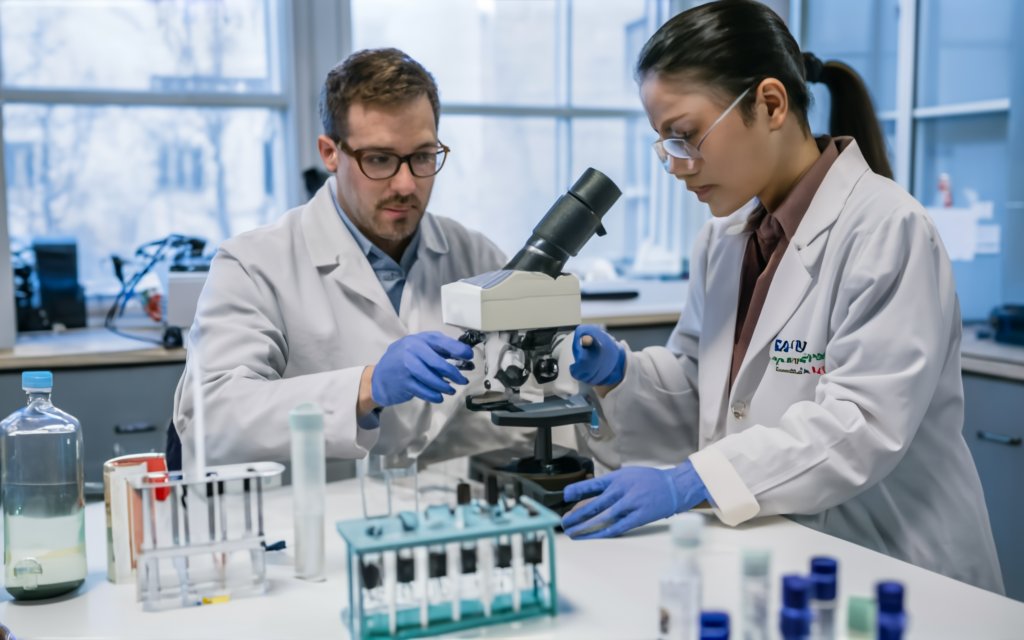.png)
"Hidden Signs, Causes, and Treatment of Prostate Cancer: What Every Man Should Know"
"Hidden Signs, Causes, and Treatment of Prostate Cancer: What Every Man Should Know"
1. Introduction
Prostate cancer is a silent killer that affects millions of men worldwide. It is the second most common cancer in men and the fifth leading cause of cancer-related deaths. In Mysore, several renowned medical oncologists and specialists specialize in the treatment of prostate cancer. If you or a loved one has been diagnosed with prostate cancer, it is crucial to seek the best possible treatment from experts in the field. This comprehensive guide will provide you with all the information you need on prostate cancer, including symptoms, risk factors, and the best treatment options available in Mysore. If you want to ensure the best care and outcomes for prostate cancer, keep reading to uncover the silent killer and find the best prostate cancer treatment in Mysore.
2. What is prostate cancer and why is it a silent killer?
Prostate cancer is a type of cancer that occurs in the prostate, a small walnut-shaped gland located below the bladder in men. The reason it is often referred to as a silent killer is because it typically does not cause noticeable symptoms in its early stages. This makes it difficult to detect and treat until it has progressed to a more advanced stage.
The prostate cancer cells grow and multiply at an abnormal rate, forming tumours that can spread to other parts of the body if left untreated. As the cancer progresses, symptoms may start to appear, such as frequent urination, difficulty in urination, blood in the urine or semen, and erectile dysfunction. However, these symptoms can also be related to other non-cancerous conditions, which further adds to the challenge of early detection.
The key to effectively managing prostate cancer lies in early detection through regular screenings, such as prostate-specific antigen (PSA) blood tests and digital rectal examinations (DREs). These tests can help identify any abnormalities in the prostate gland, enabling doctors to diagnose the cancer at an early stage when it is most treatable.
In the next section, we will explore the risk factors associated with prostate cancer, as well as delve into the various treatment options available for this disease in Mysore. Stay tuned to gain a comprehensive understanding of how to navigate through the complexities of prostate cancer and make informed decisions regarding your health.
3. Risk factors and warning signs of prostate cancer
Understanding the risk factors associated with prostate cancer is crucial for early detection and prevention. While the exact cause of prostate cancer is still unclear, certain factors can increase the likelihood of developing the disease.
Age is one of the primary risk factors. Prostate cancer is more common in men over the age of 50, and the risk increases with age. Family history also plays a role, as men with close relatives who have had prostate cancer are more likely to develop it themselves.
Ethnicity is another significant factor. African-American men have the highest risk of prostate cancer, followed by Caribbean men of African descent. Asian and Hispanic men have a lower risk compared to Caucasian men.
In addition to these risk factors, there are warning signs that should not be ignored. While prostate cancer typically does not show noticeable symptoms in its early stages, it is crucial to be aware of any changes in urination patterns, blood in the urine or semen, erectile dysfunction, or unexplained pain in the lower back, hips, or pelvis.
By staying vigilant and understanding the risk factors and warning signs, you can take proactive steps towards detecting and managing prostate cancer. In the upcoming section, we will explore the various treatment options available in Mysore, providing you with a comprehensive guide to combating this silent killer.
4. The importance of early detection and regular screenings
Early detection is key when it comes to successfully treating prostate cancer. Regular screenings are essential for identifying the disease in its early stages when treatment options are most effective.
One of the most common screening tests for prostate cancer is the prostate-specific antigen (PSA) blood test. This test measures the levels of PSA, a protein produced by the prostate gland. Elevated levels of PSA may indicate the presence of prostate cancer. However, it is important to note that PSA levels can also be affected by other factors such as age, prostate enlargement, or infection, so further diagnostic tests may be necessary.
Digital rectal examination (DRE) is another screening method that allows a healthcare provider to physically examine the prostate for any abnormalities. During this procedure, the doctor inserts a gloved finger into the rectum to feel the size, shape, and texture of the prostate gland.
While the effectiveness of PSA screenings and DREs has been a topic of debate in recent years, men need to discuss with their healthcare providers the benefits and potential risks of these tests. The decision to undergo screening should be based on a thorough understanding of individual risk factors, personal preferences, and informed medical advice.
Regular screenings can significantly increase the chances of detecting prostate cancer early, allowing for timely intervention and treatment. In the next section, we will delve into the various treatment options available for prostate cancer, empowering men with the knowledge to make informed decisions about their healthcare journey. Stay tuned!
5. Treatment options for prostate cancer
When it comes to prostate cancer, there are several treatment options available, each with its own benefits and considerations. The most suitable treatment approach will depend on various factors, such as the stage and aggressiveness of the cancer, the overall health of the patient, and personal preferences.
One common treatment option for prostate cancer is active surveillance, also known as watchful waiting. This approach involves closely monitoring the cancer through regular check-ups, blood tests, and imaging scans. Treatment is deferred until there are signs of disease progression. Active surveillance is often recommended for patients with low-risk prostate cancer or those with limited life expectancy.
Another treatment option is surgery, which involves removing the prostate gland and surrounding tissues. This can be done using traditional open surgery or minimally invasive techniques such as laparoscopy or robot-assisted surgery. Surgery may be recommended for patients with localized prostate cancer or those who prefer a more immediate and definitive treatment approach.
Radiation therapy is another commonly used treatment option for prostate cancer. This involves using high-energy beams to target and destroy cancer cells in the prostate. Radiation therapy can be delivered externally (external beam radiation therapy) or internally (brachytherapy). It may be used as the primary treatment or in combination with other therapies.
Other treatment options for prostate cancer include hormone therapy, which aims to suppress the production of testosterone (the hormone that fuels the growth of prostate cancer cells), and chemotherapy, which uses drugs to kill cancer cells throughout the body. These treatments may be recommended for advanced or metastatic prostate cancer.
In addition to these standard treatment options, there are also clinical trials and promising new therapies being researched and developed. These include immunotherapy (which harnesses the body's immune system to fight cancer) and targeted therapies (which selectively target specific genetic or molecular abnormalities in cancer cells).
Men diagnosed with prostate cancer need to discuss all available treatment options with their healthcare provider, weighing the potential benefits and risks. Each treatment option carries its own set of considerations and potential side effects. Understanding these factors will empower men to make informed decisions about their treatment plan.
In the next section, we will explore the emotional and psychological impact of a prostate cancer diagnosis and discuss strategies for coping and seeking support. Stay tuned for valuable insights on navigating the emotional aspect of this journey.
6. Support and resources for men with prostate cancer
Receiving a diagnosis of prostate cancer can be a devastating and overwhelming experience. It is essential for men to know that they are not alone in this journey. There are numerous support and resources available to help them navigate through the emotional and psychological impact of their diagnosis.
One valuable resource is support groups, where men can connect with others who are going through a similar experience. Support groups provide a safe space for sharing feelings, experiences, and coping strategies. They allow men to find comfort and reassurance knowing that others understand what they are going through.
In addition to support groups, counselling and therapy are also beneficial for men with prostate cancer. Professional psychologists or therapists can help individuals explore their emotions, develop coping mechanisms, and address any underlying psychological issues. These mental health services provide a valuable outlet for expressing fears, concerns, and uncertainties.
Furthermore, online forums and websites dedicated to prostate cancer offer a wealth of information, resources, and support. These platforms allow men to access information about treatment options, research advancements, and personal stories of others who have battled prostate cancer. Online communities provide a convenient way for men to seek advice, ask questions, and connect with individuals who share similar experiences.
Lastly, it is essential to involve loved ones in the support network. Family and friends can offer emotional support, help with practical matters, and act as advocates during the treatment process. Their presence and understanding can make a significant difference in a man's journey towards healing and recovery.
Remember that seeking support is not a sign of weakness, but rather a strength. It is crucial to reach out and take advantage of the resources available. By doing so, men can find solace, inspiration, and the tools they need to face the best prostate cancer doctor in the mysore with resilience and determination.
In the next section, we will delve into the importance of maintaining a healthy lifestyle and implementing preventive measures to reduce the risk of prostate cancer. Stay tuned for practical tips on protecting your prostate health.
7. Taking control of your health: preventive measures and lifestyle changes
When it comes to prostate cancer, prevention is key. While certain risk factors such as age and family history cannot be changed, there are still steps you can take to reduce your risk and promote overall prostate health. By implementing lifestyle changes and following preventive measures, you can protect yourself against this silent killer.
One of the most significant factors in preventing prostate cancer is maintaining a healthy lifestyle. Regular exercise not only helps maintain a healthy weight but also reduces the risk of various diseases, including prostate cancer. Aim for at least 150 minutes of moderate-intensity exercise per week, such as brisk walking, swimming, or cycling.
A balanced diet is also crucial for prostate health. Incorporate plenty of fruits, vegetables, whole grains, and lean proteins into your meals. Include foods rich in antioxidants, such as tomatoes, broccoli, and berries, which are known to reduce the risk of prostate cancer. Avoid excessive red meat consumption and reduce your intake of processed and high-fat foods.
Another preventive measure is to limit alcohol and quit smoking. Excessive alcohol consumption has been linked to an increased risk of prostate cancer, while smoking is associated with various types of cancers, including prostate cancer. Making these lifestyle changes can significantly reduce your risk and improve your overall health.
Regular check-ups and screenings are also essential for early detection and prevention. Consult with your healthcare provider to determine when and how often you should get screened for prostate cancer. Early detection can greatly increase the chances of successful treatment and recovery.
By making these lifestyle changes and following preventive measures, you can take control of your health and reduce your risk of prostate cancer. Stay proactive and prioritize your well-being because prevention is always better than cure.
In the upcoming section, we will discuss the various treatment options available for prostate cancer, providing you with valuable information to make informed decisions about your healthcare. Stay tuned for insights into surgery, radiation therapy, hormone therapy, and other treatment modalities.
8. Encouraging open conversations about prostate cancer
Encouraging open conversations about prostate cancer is crucial in raising awareness and breaking the silence surrounding this disease. Many men feel uncomfortable discussing their prostate health or seeking medical advice, often leading to delayed diagnosis and treatment. By encouraging open conversations, we can empower men to take control of their health and seek timely medical attention if needed.
Talk to your loved ones about prostate cancer, share your experiences, and spread knowledge about the importance of regular screenings. Engaging in open discussions can help dispel myths and misconceptions surrounding prostate cancer, ensuring that accurate information is shared.
Additionally, organizations and support groups play a vital role in providing platforms for men to share their stories, ask questions, and seek assistance. Take advantage of these resources to connect with others who have faced similar challenges and gain valuable insights into prostate cancer treatment and management.
Remember, open conversations about prostate cancer can save lives. Let's break the silence and encourage men to prioritize their prostate health. Stay tuned for more information on treatment options in the next section.
9. Conclusion: Empowering men to fight against prostate cancer
In conclusion, the power to fight against prostate cancer lies in our ability to have open conversations and raise awareness about this disease. By encouraging men to talk about their prostate health, we can break the silence and ensure that no one suffers in silence.
Sharing our experiences and knowledge can help dispel myths and provide accurate information about prostate cancer. Let's actively engage in discussions with our loved ones and within our communities to spread the word about the importance of regular screenings and early detection.
Furthermore, organizations and support groups are invaluable resources that offer a platform for men to connect, seek assistance, and gain insights into prostate cancer treatment and management. Take advantage of these opportunities to gain valuable information and support.
Remember, by empowering men to prioritize their prostate health, we can save lives. Together, let's continue to fight against prostate cancer and bring about positive change in the lives of those affected.

.png)
.png)
.png)
.png)
.png)

.png)
.png)
.png)


.png)

.png)
.png)

.jpg)
